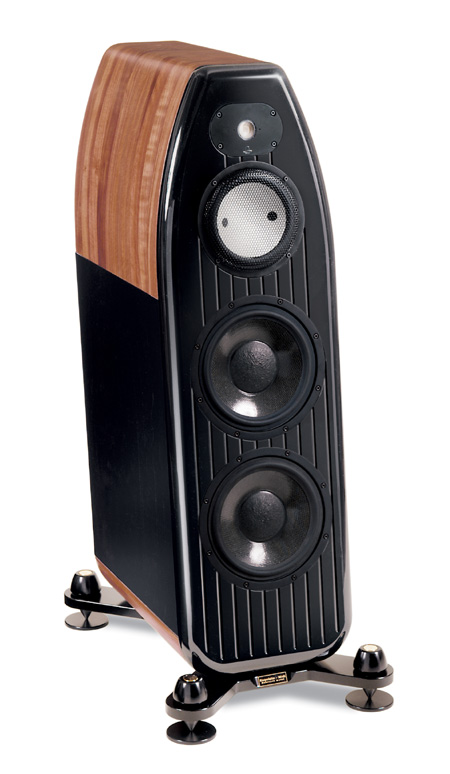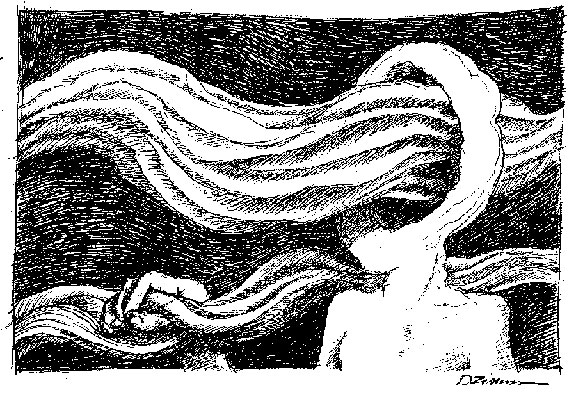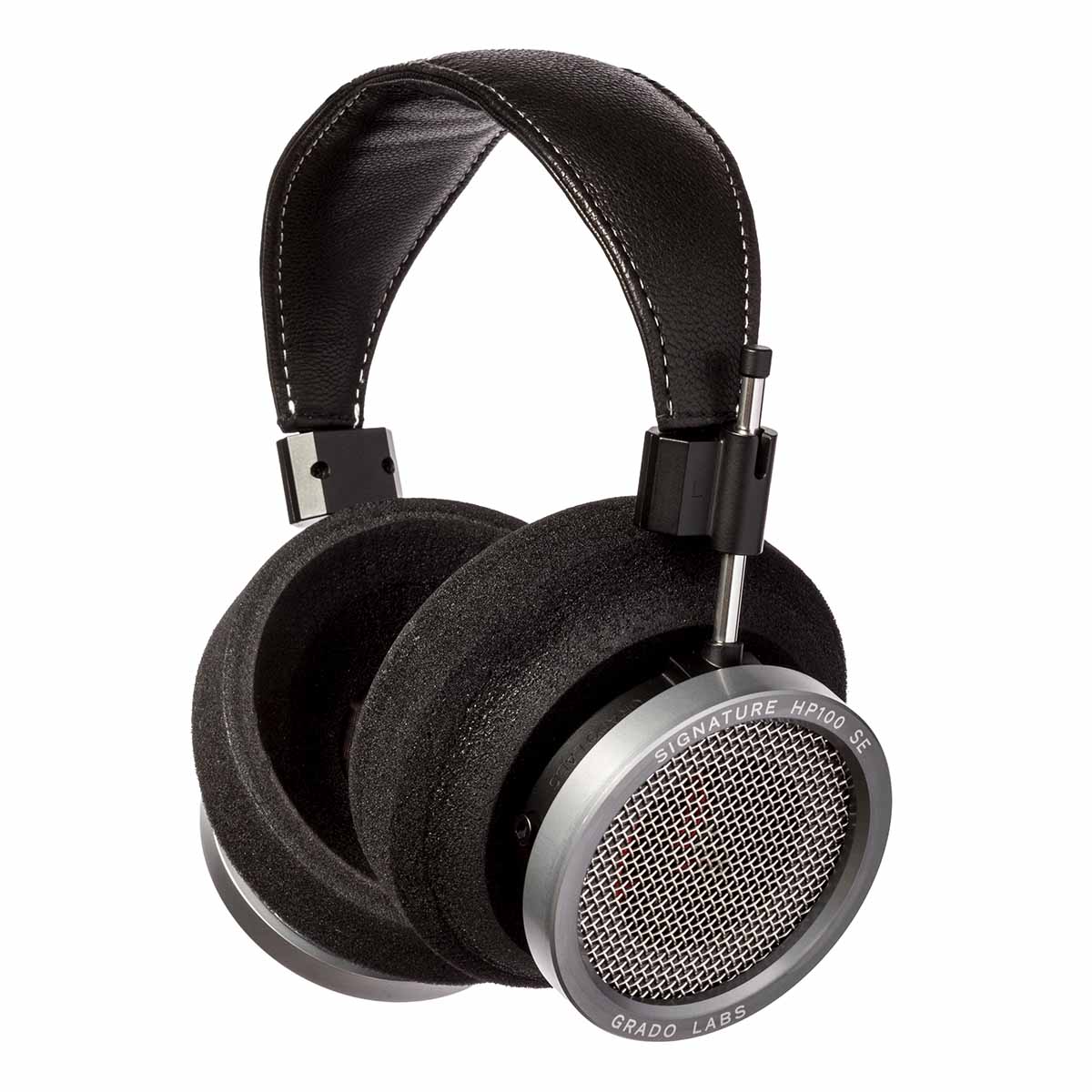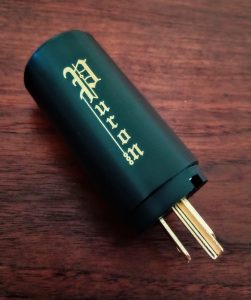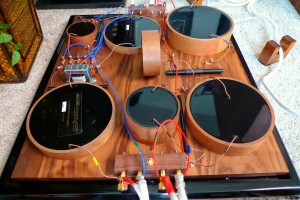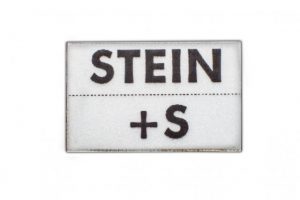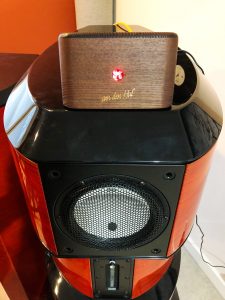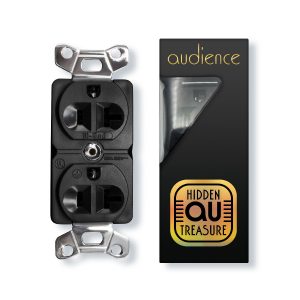This article, by Bruce Kinch, originally ran when Positive Feedback was in print - Vol. 6, No. 5, 1997.
An Introduction
The name at the head of this article is probably unfamiliar, as this is my first contribution to Positive Feedback, so perhaps I should include a few words about myself.
I started patching together audio gear in college. My friends and I were into the '60s folk scene, and since I had a couple of Shure mics and a tape deck, I was asked to engineer their first record—for what turned out to be Rounder Records. I was working as a photographer by then, doing corporate A/V presentations Monday through Friday, and shooting the Newport Festivals weekends—the pit at the front of the stage is about as good as it gets in the "palpable presence" department. I got my MFA (the degree, not the preamp) in LA, freelanced enough to get a Jefferson Airplane cover for my portfolio, and headed back to Boston, where I have been teaching photography and collecting records ever since.
A few years back I was trading in LPs for CDs, like everyone else. But regular evenings in Symphony Hall just ruined digital for me. The few things bit-in-pits did better somehow didn't provide what I wanted from the music. I preferred records, and kept running into people in used record stores who felt the same way, and who would spend serious money for collectible LPs. The audiophile vinyl reissue business began to burgeon about the time I bought a new computer, and on a whim I started a newsletter for audiophile record collectors, PRIMYL VINYL EXCHANGE (PVX).
Cleanliness Is Next To . . .
If you collect used vinyl, especially from the lower strata of the market-yard sales, thrift shops, and the local dump—you probably have record cleaning stories. You know—the priceless gem you discovered, all moldy and crusted in what appeared to be 30 year old peanut butter, but cleaned up, it sounded Fine! On the other hand, you may also have paid good money to a store or dealer who "cleaned" the record for you, but when you got it home, there was all sorts of surface noise and grit left in the grooves. You may even have purchased new, factory sealed records that sounded bad from the first play. And worse when you tried to clean it. By the way, Bucko, how did you clean it?
There seem to be as many ways to "clean a record" as there are to fix dinner. Just ask a few collectors, dealers, or audiophiles. The old London inner sleeves recommended a damp cloth. I've known people to use silicone impregnated dusting cloths, old T shirts, contact paper, lint rollers, cotton balls, velvet, and chamois cloth. Water: distilled and tap, rubbing alcohol, vodka, Windex, WD-40, lighter fluid, rubber cement, rubber cement thinner, Armstrong Vinyl Tile cleaner, various dish washing detergents, photographic film cleaners and wetting agents, lens cleaners, anti-static sprays, and more have been tried, used, and occasionally recommended. Jonathan Scull, the ultra-high-end-tweak-guru at Stereophile adds a few drops of Direct bathroom tile cleaner and Kodak Photo-Flo to his isopropyl alcohol/ distilled water cocktail. Memory fails me here, but did Sam Tellig try Armor All on records too?
The need to clean records also produced a host of commercial devices over the years. When I began collecting, I used the Watts Dustbug and Preener, later the Discwasher, more recently carbon fiber brushes from Decca, Hunt, and Audioquest. All were effective against surface dust, but not much more. One used record store I frequented years ago had a Keith Monks machine I marveled over. A miniaturized wet/dry vacuum cleaner for records! Other vacuum systems soon appeared. I almost bought a manual Nitty-Gritty when they first came out, but figured I could make my own version cheaper. (And I did, more about which in a later issue of Primyl Vinyl Exchange, when we reveal our $50 Do-It-Yourself design). Finally, I yielded to convenience, and traded a few records (honest—these things are worth real money!) for a motorized VPI 16.5, which has been eminently satisfactory. This sucker, its more sophisticated sibling the VPI 17F [reviewed in Vol. 6, No. 4 of Positive Feedback], and the Nitty Gritty are still widely available, if somewhat pricey for the casual collector. (I recently saw a mention of a similar machine from SOTA, but now understand that company has changed hands again).
I've spread, scrubbed, and sucked all sorts of cleaning solutions through my trusty VPI. Some were too weak for serious cleaning, another seemed happy to grow micro-organisms right in the bottle. I've tried various brands and a few experimental recipes. The effective Nitty-Gritty First solution apparently ran afoul of Federal safety regulations, while others (like the Last Power Cleaner) seemed rather expensive for regular use. When I started PVX, I planned from the beginning to test and report on record cleaning techniques. (Not that PVX is alone here: The Tracking Angle, Michael Fremer's estimable music review journal, has published a major treatise on a multi-step approach to record cleaning, and has lobbied eloquently for the return of the Alsop Orbitrac, an effective manual cleaner).
So, welcome to the first trial heat of the PVX Record Cleaning Derby. Rather than begin with either a well known product or a home-brew concoction, I decided to feature a new, integrated record cleaning system, designed to be equally effective WITH OR WITHOUT a vacuum cleaning machine. This is actually a family of products called "The Disc Doctor's Miracle Record Brush and Cleaner," available by direct mail-order from Lagniappe Chemicals Ltd., of St. Louis. Odds are you've not heard of it or them, but know snake oil inflected hyperbole when you see it. Relax—this stuff does work, remarkably if not quite miraculously well, and it addresses several limitations of competing products effectively. The "Dr." in question is H. Duane Goldman, Ph.D., who is knowledgeable about both the chemical and practical aspects of cleaning records, and who supports his products with detailed instructions and documentation. Why are the products not better known? Perhaps because they were developed for safe use with shellac 78 RPM recordings, acetates, and Edison Diamond Discs as well as vinyl, and marketed to sound archives, libraries, and recording engineers as well as "dedicated collectors." In a phone conversation, Dr. Goldman also alluded to a certain frustration in trying to have his products properly evaluated by certain "authorities" amongst the audiophile press. I can't imagine who he means. . . .
We'll get to the cleaning fluid momentarily — I've got to say up front that the Disc Doctor's Brush is simply the best designed device for cleaning records I've ever seen or used. A wet cleaning brush must enable various fluids to access the finest LP grooves, be unlikely to harm the record surface even when carrying contaminants or when dropped, be comfortable in the hand, durable (replaceable or cleanable bristles or pads), and should be easily stored without contamination. The Disc Doctor Brush is excellent in all respects. According to Dr. Goldman:
"After much effort a brush design evolved which satisfied our demands. Brushes are constructed from extruded rubber manufactured to industry standards with the bottom kept flat to +/- 10 mil. The pad is attached, in a user friendly manner, using a carefully selected transfer tape. The fibers of the pad are longer than groove depth and the nature of the pad's construction and assembly afford intimate contact with groove surfaces readily while overcoming any variation in the flatness of handle bottom. In our hands a pair of pads will clean 400-450 12" double-sided pressings. Throughout their lifetime, when used with a properly blended cleaning solution, the pads remain free of contamination from either biological growth or the dirt and grease removed from the dirty discs. An LP sized brush is 3 3/8" long, fitting from outer bead to a point beyond the recorded grooves greater than 95% of the time. Working width is approx. 1 1/8 ". Only slight force is required to maintain sufficient contact and the brush mates so well that a wet brush can actually lift the edge of an LP off the cleaning surface."
These brushes can also be set down on end or upside down without contamination. The brushes are sold in pairs, with replacement pad included, and are available in five sizes to match 7, 10, and 12 inch discs of various formats. Prices range from $14.50 to $19.75 per pair plus S&H. The reason the brushes come in pairs is that the Disc Doctor approach is a 2-step process, the cleaner followed by a distilled water rinse.
In my view, a record cleaning solution should be safe for repeated use on any record. This argues against the use of isopropyl alcohol (as in rubbing alcohol), which dissolves the shellac formulation of most 78's, and can potentially affect the plasticizers in LPs, causing increased wear. The cleaner should effectively remove typical dirt and debris (gritty, greasy, or gooey), mold or mildew, and the (pressing) mold-release compounds coating new records. It should be non-toxic, environmentally friendly, and harmless to the cleaning machine-which rules out many solvents. Finally, it should leave no residue, nor attract additional contamination which might foul the stylus. Oh yes-it should be economical...if not necessarily dirt cheap.
The Disc Doctor Cleaner seems to meet all these criteria. The active chemistry is listed on the bottle label (although the concentration is not), and it apparently contains no volatile, toxic solvents. Again, no snake oil. According to Dr. Goldman:
"After extensive tests, we determined that a number of modern surfactants were effective at removing contaminants normally present on vinyl surfaces. Considerations of pH, buffer capacity, harshness, ionic strength, cost, toxicity and easy removal eliminated most of our choices. The combination of water solubility and an inability to remove the fillers and extenders commonly found in most vinyl formulations led to the use of a very low concentration of 1-hydroxypropane a.k.a n-propanol. Elimination of this constituent leads to incomplete removal of the mold-release materials present on the surface of vinyl pressings and to incomplete cleaning of unidentified residues on shellac surfaces causing tracking problems and poor speed control. Improvements in the design of the brush permitted us to lower the concentration of all components of the preferred formulation. This afforded a full strength solution that would safely clean worst-case vinyl and shellac pressings in a single cycle and allow a diluted product to be used for average condition records."
The Cleaner concentrate is available in pint ($15.50), quart ($24.95), and gallon ($49.50) sizes, plus S&H. At the recommended dilution and "dosage," a quart should clean 750 or more LPs—that works out to just pennies per disc.
I tried the Disc Doctor system both with and without the VPI. In fact, the bulk of the instructions provided describe procedures for manual cleaning. Basically, a suitable work surface (the kitchen table) is covered with a plastic table cloth. The record to be cleaned is placed on a smooth, resilient surface, such as a sink protector or spare turntable mat (a junker yard sale turntable makes an ideal rotating platform). For vinyl, dilute 2 parts Cleaner with one part distilled water. A small clean bowl is filled with distilled water for the rinse. A second bowl is needed for waste water.
One brush should be labeled with tape or marker as "cleaner," the other as "rinse." About 1 ml (a half dozen drops) of Cleaner is applied to the pad of brush #1, and worked into the grooves with a light scrubbing motion parallel to the grooves. The Cleaner is soapy, not quick to evaporate, and it is easy to assure coverage. After a half dozen passes, I lifted the brush...and the record lifted too! I've never had that happen with the narrow, large bristled VPI brush. Next, a small square of 100% cotton cloth is used to sop up the cleaner by patting, not rubbing, and the excess is squeezed into the waste bowl. Brush #2 is saturated with distilled water and the scrubbing and patting dry process is repeated. Excess rinse water is squeegeed from brush #2. Pick up the record, dry the work surface, and clean the second side. The record can then be air dried—Dr. Goldman suggests a simple vinyl covered dish rack.
It's actually easier than it sounds, once you get the rhythm. Dr. Goldman maintains the single rinse is adequate; I tried slowly spinning the record on a nail in a large bowl of distilled water—just enough to soak the grooves-but couldn't hear a difference. This simple procedure cleaned the records marvelously. I queried Dr. Goldman about the high-nap 100% cotton drying squares he supplies. His suggested source? Gerber's hooded baby bath towels. Even more pragmatically, he admitted that folded pads of cheap (not the squeezably soft) toilet paper would work well. I also tried the 2" cotton pads (not cotton balls) designed for make-up removal to good effect. As far as I can tell in a humid summer climate, there is no anti-static component in the Disc Doctor formulation. Instead, and I agree, the use of a clean anti-static carbon fiber brush is recommended prior to (and after) playback.
Manual cleaning is effective and economical, especially for the occasional new acquisition. While you clean records you can also listen to music, watch TV, the kids at play, or your neighbor mowing the lawn. If you want to clean your whole collection (and you will, when you hear the improvement), you'll still want a machine. The manual procedure is easily adapted, with a few provisos. Basically, a VPI or Nitty-Gritty type machine is a vacuum fluid remover, not a washing machine: the brush and fluid do the cleaning. The "velvet" strips lining the suction slot or wand have in all probability become worn and totally gunked with previously "cleaned" residue. The down-force of the vacuum and a super-effective cleaner can cause the fabric to shed contaminants, or even scratch the disc. Either soak the wand in diluted cleaner overnight and rinse thoroughly or replace the strips. Replacement fabric should be available through your dealer, or the Disc Doctor can provide transfer tape-backed strips of their special brush material at a nominal price. Peeling the old strips may leave a residue of dried glue, which can usually be removed with a rag soaked in rubber cement thinner.
Basically, as odd as it sounds, because the strips collect debris you never want to vacuum a dirty record. If a record is filthy, dry brush or manually clean it first. The Disc Doctor brushes should be used rather than the less effective ones that come with the vacuum unit. Simply follow the manual cleaning procedure on the machine-including sopping up the cleaner with pure cotton-before vacuuming. The rinse/scrub step can be followed by the vacuum alone. The sopping-up step can also be skipped if you are cleaning a new record (yes, you should, because of the mold-release compounds) or one previously cleaned by other means. Because it is so easily done with a machine, I routinely give a second distilled water rinse, on general principles.
You may ask, is it really worth the effort to scrub, sop, and sweep an elderly LP? I've cleaned several dozen records with the Disc Doctor system, and I'd find it hard to settle for less, let alone a CD version of a vintage performance. Even records previously cleaned by other means were improved. Yes, certain problems remained: minor scratches, pressing defects, and poor quality '50s vinyl left their scattering of tics and swishes, but the grooves were remarkably free of grunge. Instrumental and vocal timbre and textures were spic-spanking clean and vividly revealed, the music discernibly more distinct from the amusical surface blemishes (especially noticeable with mono recordings); rhythm, space and micro-dynamics were portrayed against a blacker background—not the sterile emptiness of CDs, but the natural ambiance of concert hall, studio, or jazz club. More recent recordings showed additional gains—the "window" onto the performance was markedly more transparent—and even the new audiophile reissues were improved. We're talking increases in clarity and definition not unlike a cartridge, cable, or preamp upgrade in many instances. And the stylus stayed clean.
A Miracle Record Cleaner? Perhaps not, but then I haven't located a reliable source for distilled Holy Water yet, either. What does seem miraculous, in this day of overpriced tweaks and magic dots, is discovering a state-of-the-art product, affordably priced, thoroughly engineered, and invaluable to both the impecunious collector of obscure recordings and the affluent audiophile with a reference quality system.
I would rate both performance and value as "A."






